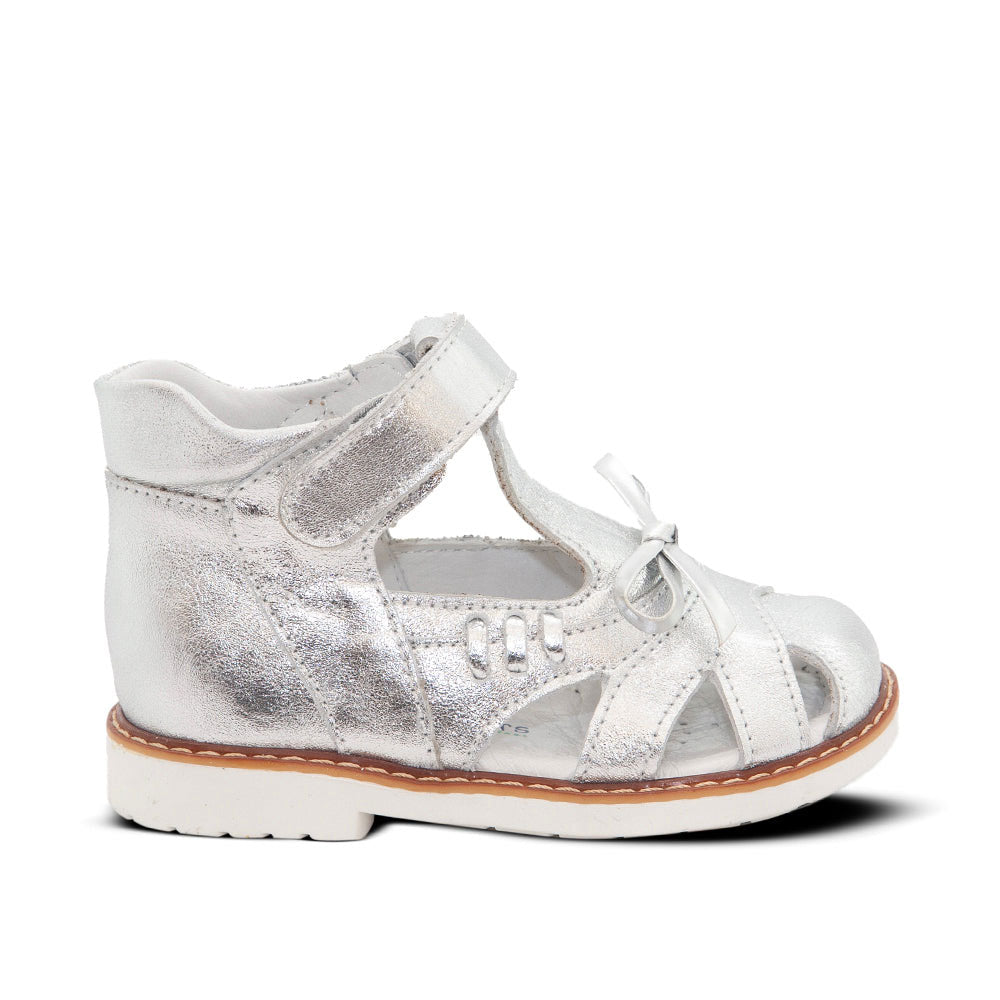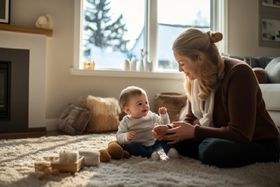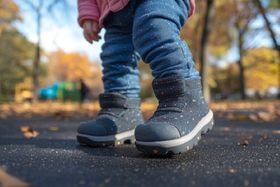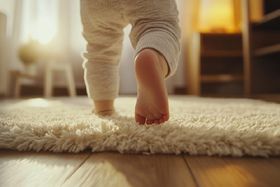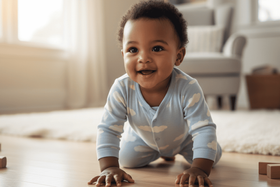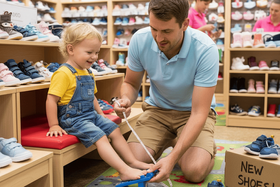Should Toddlers Wear Barefoot Shoes? Expert Discussion
Barefoot shoes allow toddlers to develop foot muscles and arches naturally, similar to walking barefoot, while providing protection outdoors. Research shows they support better foot development than traditional shoes.
Published October 11, 2025
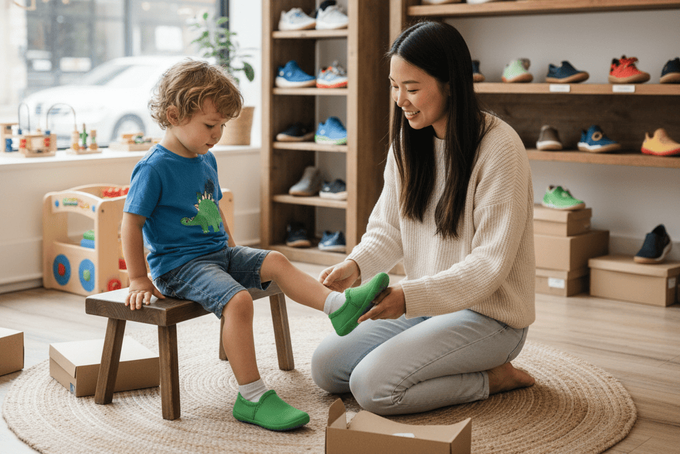
When your little one takes those first wobbly steps, you'll face lots of decisions about what's best for them. If you've come across barefoot shoes, you might be curious about whether they're actually helpful for your toddler's development or just another parenting trend.
The good news is that there's solid research showing these shoes can support natural foot development in meaningful ways. Let's look into barefoot shoes and whether they're the best option for your little one's growing feet.
The Issue With Traditional Toddler Shoes
Most toddlers wear regular athletic shoes with rubber soles and velcro—mainly because they're easy and look cute. These shoes do protect little feet from getting hurt, but here's something interesting: they actually change how your toddler walks.
Studies show that kids in traditional shoes walk with a wider stance, take longer steps, and bend their hips, knees, and ankles more [1]. The stiffer the sole, the more this happens.
Here's what you need to know: babies are born with flat feet. A proper arch develops naturally as their feet grow over about six to ten years. Walking barefoot helps strengthen foot muscles and support the arch formation.
It also keeps toes flexible. Regular shoes don't really help with this arch-building part, which is why some doctors are starting to think barefoot shoes might be a better choice.
But don't worry—traditional shoes won't hurt your child. Plenty of kids wear regular shoes, and their feet develop just fine. It's just about understanding which options might work better.
Is It Better for Toddlers to Wear Shoes or Go Barefoot?
Walking barefoot is really good for growing feet. It helps the arch form properly and keeps toes flexible. At home or on grass, barefoot walking also gives your toddler important sensory experiences that help with brain development. Plus, it teaches them how to walk on different surfaces.
That said, shoes become important once your toddler plays outside. Walking barefoot in wooded areas means they could step on sticks or rocks. Hot pavement can burn little feet in summer, and they need protection from cold in winter. And let's be real—daycare, preschool, and most playgrounds require shoes for safety.
This is where barefoot shoes come in handy. Research shows that lightweight, flexible barefoot shoes with a wide toe area give the same benefits as walking without shoes, while still protecting feet from injuries [2].
What Makes Barefoot Shoes Different for Toddlers
Barefoot shoes are designed to let feet move like they're barefoot. Here's what makes them special:
The sole is flat—no raised heel. It's also pretty thin, so your toddler can feel the ground better while walking. The toe area is wide, so toes can move freely and stay flexible. This also helps toddlers keep their toes down instead of curled up while walking.
More and more parents are choosing barefoot shoes because they support foot muscle development just like barefoot walking does. If you prefer your toddler to wear shoes most of the day, this type gives you a better option than regular shoes.
Why Are Podiatrists Against Barefoot Shoes for Babies?
Actually, not all podiatrists are against them. The main concern is about specific foot problems that need special treatment. Barefoot shoes are great for healthy foot development, but some babies and toddlers need conventional shoes or special orthotics because of diagnosed foot issues.
For example, some babies are born with a C-shaped foot deformity called metatarsus adductus, or clubfoot. These conditions sometimes need special corrective shoes to keep the feet in the right position after treatment. In cases like these, barefoot shoes wouldn't help with the medical problem.
But here's the thing: if your toddler doesn't have any diagnosed foot problems, barefoot shoes support natural development really well.
Expert Note: I think they're helpful. But, if you're worried about your child's feet, just ask your pediatrician at the next checkup—they can give you peace of mind.
When to Introduce Barefoot Shoes for Toddlers
The best time to start is immediately. Make barefoot shoes your baby's first walking shoe. Once your toddler is walking independently and consistently, that's your ideal moment. Starting with barefoot shoes from the beginning means no adjustment period—they won't know any different.
Many toddlers don't like change, especially when something feels different on their feet. Some kids might reject any shoes and just want to be barefoot. If you try barefoot shoes later and your toddler won't wear them, go back to regular shoes and try again in a few weeks. If it still doesn't work, just let them have more barefoot time at home.
Don't stress if your toddler fights new shoes—it's totally normal. Every kid is different, and what matters is finding what works for your little one.
Choosing the Right Barefoot Shoes for Your Toddler
When you're shopping for barefoot shoes, look for:
- A flat, thin sole
- A wide toe box so toes can move naturally
- Good heel support that doesn't stop the foot from moving
Every child's foot is different, so there's no one-size-fits-all rule for fit. Also, do a bit of research on the company before buying. Make sure they're not making wild claims about their shoes. Stick with brands that base their designs on actual research about how feet develop.
Watch out for raised heels, narrow toe boxes, thick, stiff soles, or claims that sound too good to be true.
Supporting Your Toddler's Natural Foot Development
There's solid research backing barefoot shoes for babies and toddlers who are learning to walk. Barefoot time at home is still important, but barefoot shoes are a great choice when your child needs to wear shoes.
Whether you go with barefoot shoes, regular shoes, or just lots of barefoot time, you're making a thoughtful choice for your child.
First Walkers offers carefully designed barefoot shoes that support natural foot development while protecting your toddler's feet during play. Their collection focuses on what actually matters—flat soles, wide toe boxes, and flexible materials that let feet move naturally.
References
Wegener, C., Hunt, A. E., Vanwanseele, B., Burns, J., & Smith, R. M. (2011). Effect of children’s shoes on gait: a systematic review and meta‐analysis. Journal of Foot and Ankle Research, 4(1). https://doi.org/10.1186/1757-1146-4-3
Perkins, K. P., Hanney, W. J., & Rothschild, C. E. (2014). The risks and benefits of running barefoot or in minimalist shoes. Sports Health a Multidisciplinary Approach, 6(6), 475–480. https://doi.org/10.1177/1941738114546846
Disclaimer: First Walkers' information is intended for educational and informational purposes related to toddler footwear and feet. We encourage you to consider individual circumstances and consult qualified orthopedists about specific conditions.
FAQs
Should my toddler wear barefoot shoes when first learning to walk?
It's better to wait until your toddler is walking independently and consistently. Before that, they need to learn to pull themselves up and "cruise" along furniture—these skills come first. Once they're really walking, climbing, and running around, barefoot shoes will do more to strengthen their foot muscles.
How long will it take my toddler to get used to barefoot shoes?
It really depends on your child's personality. Some toddlers hate any change in routine, including shoes that feel different. Your best bet? Make barefoot shoes the first walking shoe so there's nothing to adjust to. If you switch later and they won't wear them, go back to their old shoes and try again in a few weeks. Still not working? Just give them more barefoot time at home instead.
Can barefoot shoes replace all barefoot time?
No. Barefoot shoes are meant to give similar benefits to being barefoot, but actual barefoot time is still important. Walking barefoot on grass or cool sand gives your toddler sensory input that's good for brain development. It also teaches them how to handle uneven surfaces. Keep letting them go barefoot at home and in safe places.
When should I use regular shoes instead of barefoot shoes?
If your toddler has been diagnosed with any foot condition, regular shoes or orthotics might be better. Problems like metatarsus adductus or clubfoot sometimes need special footwear to help with treatment. If your child has any foot issue, check with your pediatrician or a foot specialist before choosing shoes.
How do I know if barefoot shoes fit properly?
They should support the heel well and not squeeze or restrict how the foot moves. The toe box should be wide enough for toes to spread out. Every kid's foot is different, so trust what looks and feels right. If you're not sure, ask the store staff or your pediatrician for help.

